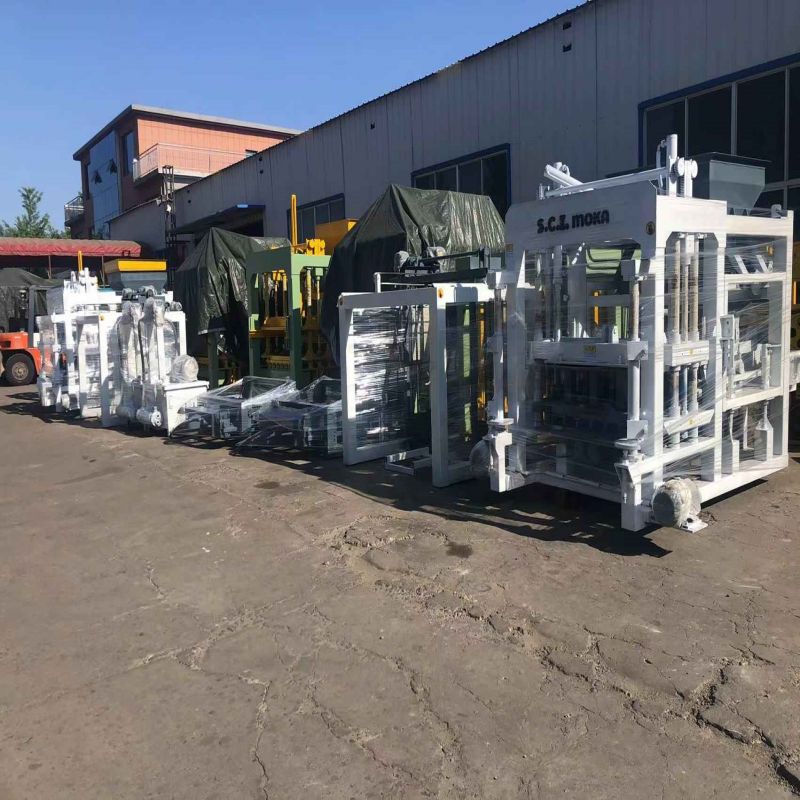
Image source:Aiwei block machine
Introduction
The construction industry is the backbone of infrastructure development worldwide, and bricks have remained a fundamental building material for centuries. In the contemporary construction landscape, the adoption of advanced technology, such as brick making machines, has revolutionized the production of bricks, leading to increased efficiency, higher quality, and reduced labor costs. However, investing in brick making machines involves a significant upfront cost. To make an informed decision, it’s crucial to conduct a comprehensive cost-benefit analysis. This article delves into the key factors that influence the cost and benefits of investing in brick making machines.
I. Understanding Brick Making Machines
Before diving into the cost-benefit analysis, it’s essential to understand the types of brick making machines available and their functionalities. Brick making machines can be broadly categorized into three types:
- Manual Machines: These machines are operated by hand and are suitable for small-scale or artisanal brick production. They are the most affordable but have limited production capacity.
- Semi-Automatic Machines: These machines combine manual and automatic operations. They are suitable for mid-sized brick production and offer improved efficiency compared to manual machines.
- Fully Automatic Machines: These machines are highly automated and require minimal human intervention. They are suitable for large-scale brick production and offer the highest efficiency and quality.
II. Cost Considerations
Investing in brick making machines involves several cost components, including:
- Machine Cost: This is the upfront cost of purchasing the brick making machine, which varies based on the type, capacity, and technology level of the machine. Fully automatic machines tend to be more expensive than manual or semi-automatic ones.
- Raw Material Costs: The cost of raw materials, such as clay, concrete, or fly ash, can vary depending on availability and location. It’s essential to calculate the ongoing raw material costs for brick production.
- Labor Costs: While automated machines reduce the need for manual labor, there are still labor costs associated with operating and maintaining the machines.
- Maintenance and Repairs: Brick making machines require regular maintenance to ensure they function optimally. Maintenance costs can include spare parts and labor for repairs.
- Energy Costs: Depending on the machine’s type and technology, energy consumption can vary. Fully automatic machines may require more energy due to their higher production capacity.
- Infrastructure Costs: Building a suitable workspace and infrastructure for brick production, including shelter for the machines, can incur additional costs.
- Financing Costs: If you need to take out a loan or use financing to purchase the machine, interest and financing charges should be factored into the cost analysis.
III. Benefits and Returns
On the other side of the equation, investing in brick making machines can offer a range of benefits and returns:
- Increased Production Efficiency: Brick making machines significantly increase production rates compared to manual methods, allowing for a higher volume of bricks to be manufactured in a shorter time.
- Consistent Quality: Automated machines produce bricks with consistent dimensions and quality, reducing rejects and waste.
- Labor Savings: While there are still labor costs involved, the reduction in manual labor requirements can result in substantial savings, especially in regions with high labor costs.
- Reduced Raw Material Consumption: Some brick making machines are designed to optimize raw material usage, reducing costs associated with raw material procurement.
- Market Competitiveness: By adopting modern technology, brick manufacturers can remain competitive in the market by offering quality products at competitive prices.
- Environmental Benefits: Certain brick making machines are designed to be eco-friendly, reducing environmental impact by using recycled materials or minimizing energy consumption.
- Long-Term Returns: Investing in high-quality, durable machines can lead to long-term returns as the machines operate efficiently for many years.
IV. Conducting the Cost-Benefit Analysis
To conduct a cost-benefit analysis when considering an investment in brick making machines, it’s essential to:
- Calculate Total Costs: Add up all the costs associated with the investment, including machine cost, raw materials, labor, maintenance, energy, infrastructure, and financing costs.
- Forecast Revenues: Estimate your brick production capacity and the selling price of the bricks. Calculate the potential revenue from selling bricks over time.
- Analyze ROI: Calculate the return on investment (ROI) by comparing the total benefits (revenue generated) to the total costs. The ROI will help you understand how long it will take to recoup your initial investment.
- Consider Intangible Benefits: Don’t overlook intangible benefits, such as improved product quality, market competitiveness, and reduced environmental impact.
- Evaluate Risk: Assess the potential risks associated with the investment, such as market volatility, changing regulations, or unexpected maintenance costs.
- Seek Professional Advice: If needed, consult with financial experts or industry specialists to ensure your cost-benefit analysis is comprehensive and accurate.
Conclusion
Investing in brick making machines is a significant decision that requires a thorough cost-benefit analysis. While the upfront costs can be substantial, the long-term benefits, including increased production efficiency, labor savings, and improved product quality, can justify the investment. It’s crucial to consider all cost components and potential returns to make an informed decision that aligns with your business goals and market conditions. Additionally, staying informed about the latest advancements in brick making technology can help you make a forward-looking investment that keeps your business competitive in the construction industry.
